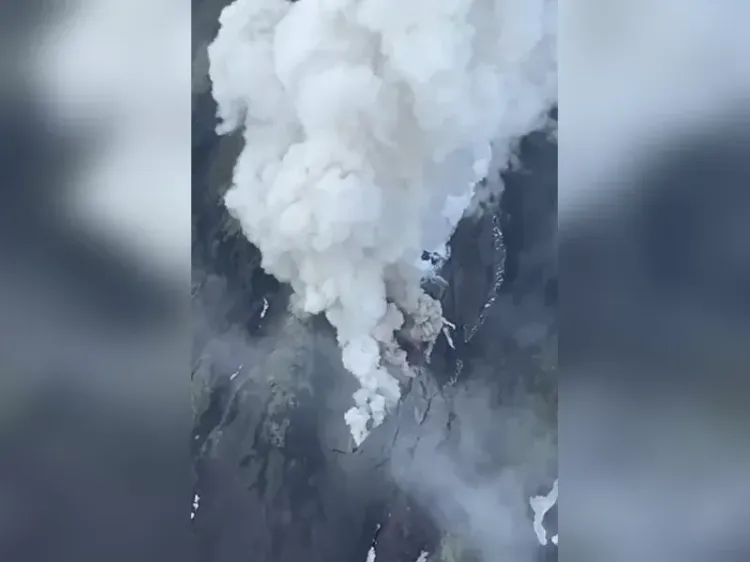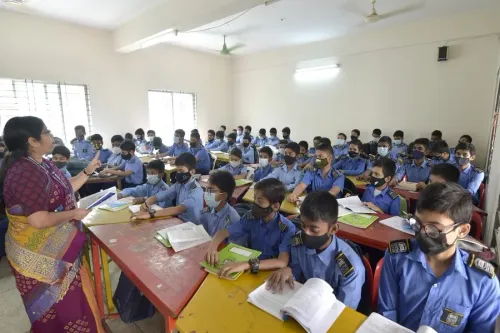What Happened to the Dam Near Klyuchevskoy Volcano?

Synopsis
Key Takeaways
- Dam collapse near Klyuchevskoy Volcano raises safety concerns.
- Increased volcanic activity linked to recent earthquakes.
- Tourists in Tolbachinsky Valley face potential risks.
- No tsunami warning issued after seismic events.
- Local authorities urging safety precautions for residents.
Vladivostok, Aug 6 (Xinhua) A dam has been destroyed near the Klyuchevskoy Volcano on the Kamchatka Peninsula in Russia's Far East, raising alarms regarding possible mudflows and transport interruptions in the area, as per local officials.
Field investigations carried out from July 30 to August 2, 2025, near the Studenaya River indicated that the dam, which was built in 2023 to divide the river’s right and left channels, has collapsed, permitting water to flow unimpeded through both channels, according to the Institute of Volcanology and Seismology of the Far Eastern Branch of the Russian Academy of Sciences, in their Telegram communication.
Experts link the destruction to heightened volcanic activity instigated by a significant earthquake that occurred in the vicinity on July 30, as reported by the Xinhua news agency.
Lava from the Klyuchevskoy Volcano is currently moving towards the Bogdanovich Glacier, which is accelerating the melting of ice. The resultant surge of meltwater is cascading down the slopes, causing extensive mud and debris flows.
Experts caution that if these flows persist and worsen, they could pose a serious risk to visitors in the Tolbachinsky Valley.
Earlier on August 3, another powerful earthquake measuring 6.7 struck the Kuril Islands in Russia, according to the German Research Centre for Geosciences (GFZ). The agency initially gauged the quake at a magnitude of 6.35 with a shallow depth of 10 kilometers (6.2 miles) but later adjusted its findings.
The Pacific Tsunami Warning Center recorded the earthquake at a magnitude of 7.0 and confirmed no tsunami warning was issued following the quake.
After the initial quake, aftershocks of magnitude 6.8 were reported in Russia's Kamchatka Peninsula, as announced by the regional branch of the Ministry of Emergency Situations via social media.
This quake occurred at 17:37 local time (0537 GMT), located 277 km from Petropavlovsk-Kamchatsky, the regional capital, at a depth of 26 km.
According to the Kamchatka Tsunami Warning and Monitoring Center, tsunami waves resulting from the quake are not expected to surpass 19 cm.
Despite the minor wave height, local emergency services have recommended that residents maintain distance from the coastline as a precaution.
The ministry also advised vessels operating in coastal waters, including those anchored in open roadsteads or bays with broad entrances, to move out to sea beyond the 50-meter isobath and to navigate perpendicular to the shoreline.









